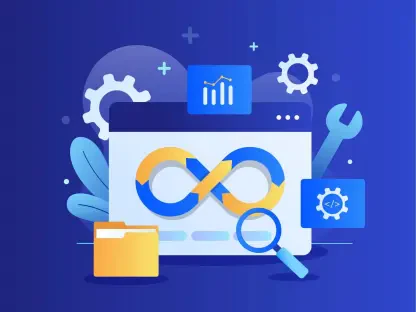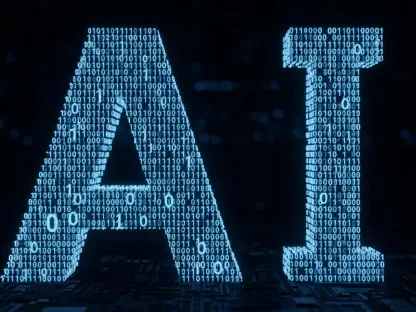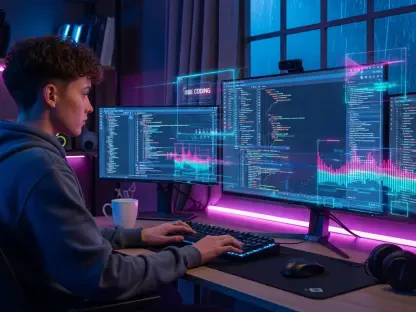I’m thrilled to sit down with Anand Naidu, a seasoned development expert with a mastery of both frontend and backend technologies. With his deep insights into various coding languages and emerging trends, Anand is the perfect person to guide us through the fascinating world of AI-driven app development and the concept of “vibe coding.” In this conversation, we’ll explore how AI is transforming who can build software, the benefits and challenges it brings to both newcomers and professionals, and the balance between speed and quality in modern coding practices.
Can you explain what “vibe coding” means to you in a way that anyone can understand?
Sure, vibe coding is essentially about building software through a more intuitive, conversational approach with AI tools. Instead of writing every line of code manually, you describe your idea or problem in plain language, and the AI helps generate the code or framework for you. It’s like brainstorming with a super-smart assistant who can turn your thoughts into something tangible. I first stumbled upon this concept while experimenting with AI tools for quick prototypes, and it’s exciting because it lowers the barrier to entry for creating apps.
How did you first encounter this idea or trend of vibe coding?
I came across it while working on a personal project a couple of years ago. I was using an AI-powered coding assistant to speed up some repetitive tasks, and I realized I could describe what I wanted in a casual way, almost like chatting with a colleague. The tool just got it and spit out usable code. That was a lightbulb moment for me—coding didn’t have to be so rigid anymore. It felt like the future was already here.
Why do you think vibe coding is resonating with so many people right now?
I think it’s because it makes technology accessible to everyone, not just trained developers. People who’ve never coded a day in their life can now create apps by simply talking through their needs. Plus, for professionals like me, it’s a massive time-saver. It’s catching on because it taps into this universal desire to solve problems quickly without getting bogged down by technical hurdles. It’s empowering, honestly.
How has AI opened up app development to non-coders who might not have a technical background?
AI has been a game-changer for non-coders. Tools like low-code or no-code platforms allow someone with zero programming knowledge to build functional apps just by describing what they want. For instance, imagine a small business owner who needs a way to track expenses—they can chat with an AI tool, and within hours, they’ve got a custom solution. It’s democratizing tech in a way we’ve never seen before, breaking down walls that used to keep people out of software creation.
What’s the biggest benefit for non-technical folks using these AI-driven tools?
The biggest benefit is speed paired with simplicity. Non-technical users don’t have to spend years learning to code or even months figuring out complex software. They can solve real, immediate problems—like managing data or automating tasks—without any steep learning curve. It’s also a confidence booster; seeing your idea come to life so fast makes you feel capable of tackling bigger challenges.
What challenges do non-coders face when relying on AI to build software?
One major challenge is that AI-generated solutions aren’t always perfect or tailored to complex needs. Non-coders might not know how to spot flaws in the code or customize it further, which can lead to frustration if the app doesn’t work as expected. There’s also a risk of over-reliance—without understanding the basics, they might not know how to troubleshoot or maintain what they’ve built. It’s a powerful starting point, but it’s not a full replacement for technical know-how.
How does vibe coding enhance productivity or creativity for professional developers like yourself?
For pros, vibe coding is like having a super-efficient co-worker who handles the grunt work. It boosts productivity by automating repetitive tasks and lets us focus on the creative, problem-solving aspects of development. It’s also a fantastic way to experiment—since AI can whip up a prototype in minutes, we can test wild ideas without investing days or weeks. It frees up mental space to think about the big picture instead of getting stuck in the weeds.
Can you share an example of a task that used to take forever but is now much quicker with AI tools?
Absolutely. One thing that comes to mind is setting up boilerplate code for a new web app. In the past, I’d spend hours configuring the basic structure—routing, authentication, basic styling. Now, with AI tools, I can describe the app’s purpose, and it generates a solid starting point in minutes. I recently built a small internal tool for my team in under an hour, something that would’ve taken half a day before. It’s a huge time-saver.
How does vibe coding support brainstorming or prototyping new ideas?
It’s incredible for brainstorming because it removes the friction of turning thoughts into something concrete. When I’m prototyping, I can just throw out a concept—like a dashboard with specific features—and the AI will mock it up instantly. This lets me iterate fast, show it to stakeholders or teammates, and refine it based on feedback. It’s like having a sketch artist who can draw your vision in real-time, sparking more ideas as you go.
What are some AI tools you’ve used or come across that are making a difference in coding?
I’ve worked with several, like GitHub Copilot and features in VS Code that integrate AI assistance. These tools are fantastic for suggesting code snippets, completing functions, or even debugging on the fly. There are also platforms for non-coders that I’ve explored out of curiosity, which are equally impressive for simplifying app creation. They’re changing the game by making development more collaborative between humans and machines.
Which of these tools do you find most helpful, and what makes it stand out?
For me, GitHub Copilot is a standout. It’s like having a pair programmer who’s always ready with suggestions. What makes it special is its ability to understand context—it doesn’t just throw random code at you; it anticipates what you’re trying to do based on your project. I’ve used it to write complex algorithms much faster than I could’ve on my own. It’s not perfect, but it’s a powerful partner.
How do these AI tools change the way developers approach a project from start to finish?
They shift the focus from nitty-gritty details to the end goal. Developers can start with a high-level vision and let AI handle the initial heavy lifting, like structuring the project or automating tests. This means we spend less time on setup and more on refining functionality or user experience. It also encourages experimentation since failing fast is less costly. Overall, it’s a more outcome-focused way of working.
I’ve heard about a “multiplier effect” for engineers using AI. Can you explain what that means to you?
The multiplier effect is about amplifying what a developer can achieve. AI takes over the tedious, time-consuming parts of coding—like researching syntax or writing repetitive scripts—so we can tackle more projects or dive deeper into complex challenges. It’s like having extra hours in the day. For me, it means I can deliver better results faster, whether I’m working solo or with a team.
How does AI handle the mundane or repetitive aspects of coding to help with this effect?
AI excels at automating the boring stuff. Think of writing unit tests, formatting code, or generating documentation—tasks that are necessary but mind-numbing. I’ve used tools to auto-generate hundreds of lines of boilerplate or suggest fixes for common bugs, which saves me from hours of monotony. It’s not just about speed; it’s about keeping my energy for the parts of coding that actually need human ingenuity.
Does this free up time for more meaningful work, and if so, what kind?
Definitely. With AI handling the routine, I can focus on strategic work—like designing better architecture, optimizing performance, or crafting a seamless user experience. It also gives me room to mentor junior developers or collaborate more with clients to understand their needs. Those are the areas where human insight makes the biggest difference, and AI lets me prioritize them.
While there’s a lot of excitement around vibe coding, what concerns do you have about relying heavily on AI for software development?
I’m thrilled about the potential, but I worry about quality and oversight. AI can produce code quickly, but it’s not always optimized or secure. There’s a risk of developers—or non-developers—accepting AI output without reviewing it thoroughly, which can lead to bugs or vulnerabilities. Plus, over-dependence might dull critical thinking skills over time. We can’t let speed trump diligence.
Are there risks in taking shortcuts with AI that could create issues down the line?
Absolutely. Shortcuts can be tempting—like skipping security checks or using AI-generated code without understanding it—but they often backfire. I’ve seen cases where quick fixes led to scalability issues or data leaks because the foundation wasn’t solid. If you’re not careful, you might build something fast but spend twice as long fixing it later. It’s a reminder that AI is a tool, not a magic wand.
How can developers balance the speed of vibe coding with ensuring their code is robust and secure?
Balance comes from discipline. Developers need to treat AI as a starting point, not the final product. That means always reviewing the code, running thorough tests, and applying best practices for security, even if it slows things down a bit. I make it a habit to double-check critical components myself and involve peers for feedback. Speed is great, but it’s worthless if the app falls apart under pressure.
The idea of “outcome-driven development” comes up with vibe coding. Can you describe what that looks like in a real-world scenario?
Outcome-driven development is about focusing on the “what” rather than the “how.” In practice, it means starting with the end goal—like building a customer tracking tool—and letting AI figure out the initial code structure while I refine the specifics. For a recent project, I described the app’s purpose to an AI tool, got a working draft in minutes, and then spent my time tweaking it to meet exact needs. It flips the traditional process on its head.
How does this differ from the traditional coding approach you’ve used in the past?
Traditional coding is very process-oriented—you focus on every step, writing and debugging line by line, figuring out the “how” before anything else. It’s meticulous but slow. With outcome-driven development through vibe coding, you start with the desired result and work backward, letting AI handle the early grunt work. It’s less about the journey of coding and more about reaching the destination efficiently.
What is your forecast for the future of vibe coding and AI in app development?
I think vibe coding is just the beginning. Over the next few years, I expect AI tools to become even more intuitive, understanding not just our words but the nuances of our intent. We’ll likely see tighter integration between AI and development environments, making collaboration seamless. For app development, AI will further blur the lines between coders and non-coders, but I believe human oversight will always be crucial. My hope is that these tools evolve to prioritize security and scalability as much as speed, creating a future where anyone can build robust apps with confidence.









